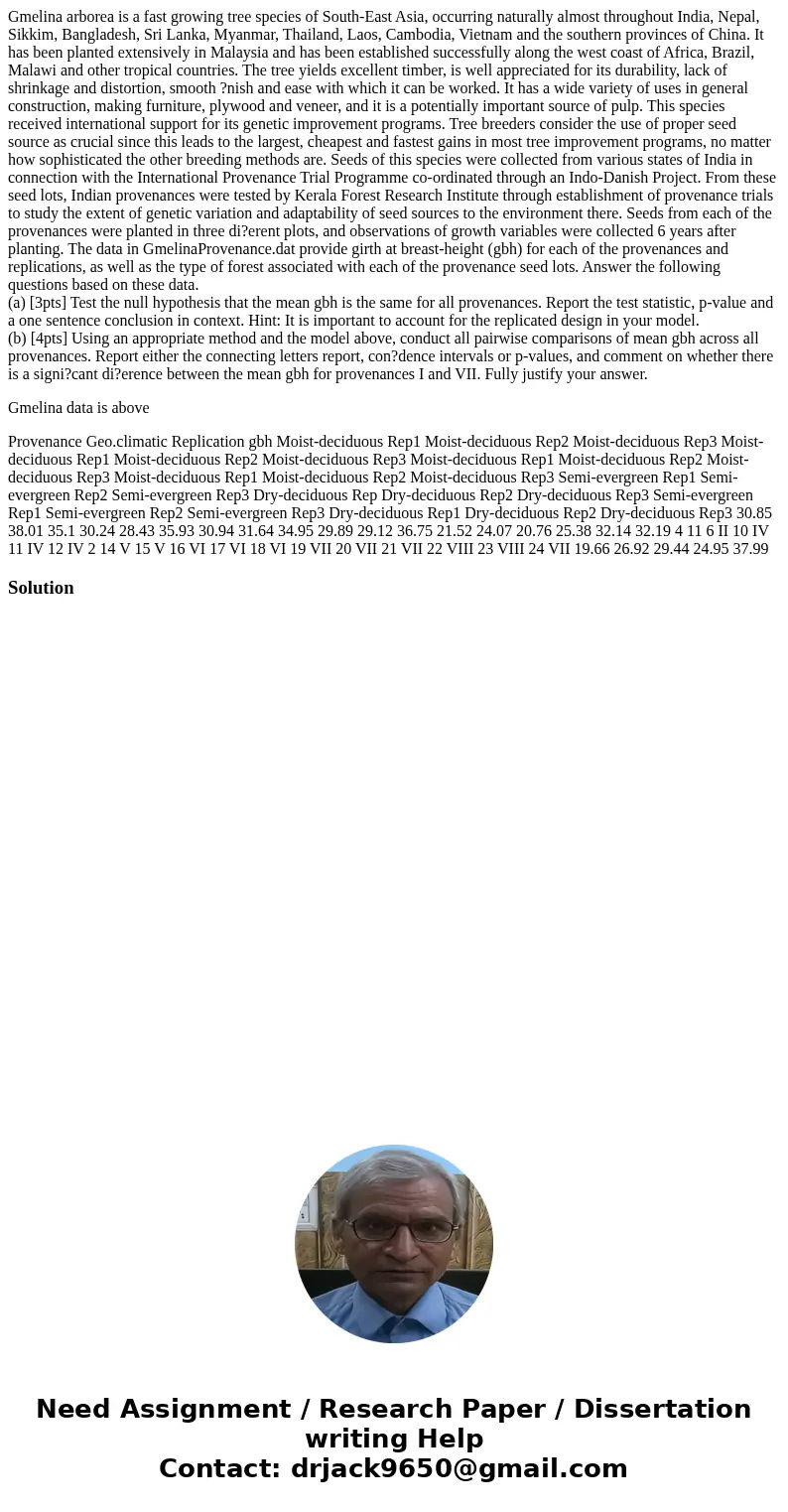Gmelina arborea is a fast growing tree species of SouthEast
Gmelina arborea is a fast growing tree species of South-East Asia, occurring naturally almost throughout India, Nepal, Sikkim, Bangladesh, Sri Lanka, Myanmar, Thailand, Laos, Cambodia, Vietnam and the southern provinces of China. It has been planted extensively in Malaysia and has been established successfully along the west coast of Africa, Brazil, Malawi and other tropical countries. The tree yields excellent timber, is well appreciated for its durability, lack of shrinkage and distortion, smooth ?nish and ease with which it can be worked. It has a wide variety of uses in general construction, making furniture, plywood and veneer, and it is a potentially important source of pulp. This species received international support for its genetic improvement programs. Tree breeders consider the use of proper seed source as crucial since this leads to the largest, cheapest and fastest gains in most tree improvement programs, no matter how sophisticated the other breeding methods are. Seeds of this species were collected from various states of India in connection with the International Provenance Trial Programme co-ordinated through an Indo-Danish Project. From these seed lots, Indian provenances were tested by Kerala Forest Research Institute through establishment of provenance trials to study the extent of genetic variation and adaptability of seed sources to the environment there. Seeds from each of the provenances were planted in three di?erent plots, and observations of growth variables were collected 6 years after planting. The data in GmelinaProvenance.dat provide girth at breast-height (gbh) for each of the provenances and replications, as well as the type of forest associated with each of the provenance seed lots. Answer the following questions based on these data.
(a) [3pts] Test the null hypothesis that the mean gbh is the same for all provenances. Report the test statistic, p-value and a one sentence conclusion in context. Hint: It is important to account for the replicated design in your model.
(b) [4pts] Using an appropriate method and the model above, conduct all pairwise comparisons of mean gbh across all provenances. Report either the connecting letters report, con?dence intervals or p-values, and comment on whether there is a signi?cant di?erence between the mean gbh for provenances I and VII. Fully justify your answer.
Gmelina data is above
Provenance Geo.climatic Replication gbh Moist-deciduous Rep1 Moist-deciduous Rep2 Moist-deciduous Rep3 Moist-deciduous Rep1 Moist-deciduous Rep2 Moist-deciduous Rep3 Moist-deciduous Rep1 Moist-deciduous Rep2 Moist-deciduous Rep3 Moist-deciduous Rep1 Moist-deciduous Rep2 Moist-deciduous Rep3 Semi-evergreen Rep1 Semi-evergreen Rep2 Semi-evergreen Rep3 Dry-deciduous Rep Dry-deciduous Rep2 Dry-deciduous Rep3 Semi-evergreen Rep1 Semi-evergreen Rep2 Semi-evergreen Rep3 Dry-deciduous Rep1 Dry-deciduous Rep2 Dry-deciduous Rep3 30.85 38.01 35.1 30.24 28.43 35.93 30.94 31.64 34.95 29.89 29.12 36.75 21.52 24.07 20.76 25.38 32.14 32.19 4 11 6 II 10 IV 11 IV 12 IV 2 14 V 15 V 16 VI 17 VI 18 VI 19 VII 20 VII 21 VII 22 VIII 23 VIII 24 VII 19.66 26.92 29.44 24.95 37.99Solution

 Homework Sourse
Homework Sourse